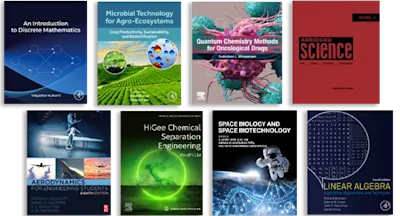
Generative Learning for Wireless Communications
Fundamentals and Applications
- 1st Edition - May 1, 2026
- Latest edition
- Editors: Songyang Zhang, Shuai Zhang, Chuan Huang
- Language: English
- Paperback ISBN:9 7 8 - 0 - 4 4 3 - 4 1 4 9 7 - 8
- eBook ISBN:9 7 8 - 0 - 4 4 3 - 4 1 4 9 8 - 5
Generative learning (GL) has emerged as an essential tool for data processing and network optimization in the broad area of next-generation communication systems. Generative Le… Read more
Purchase options

- Explains the fundamental concepts of the state-of-the-art generative learning models
- Presents the state-of-the-art methods of generative AI in wireless communications.
- Gives practical guidance on how to apply generative AI in wireless communications
- Includes case studies and algorithm designs
- Presents the critical challenges of GL today and promising future directions
1. Wireless Communications in the Era of Artificial Intelligence
2. Overview of Generative AI models and Potentials in Wireless Communications
Part II – Foundations of Generative Learning Models
3. Fundamentals of Generative Adversarial Nets
4. Fundamentals of Variational Auto Encoder
5. Introduction of Advanced Generative AI Models: Diffusion and Transformers
Part III – Generative AI for Physical Networking and Communication Theory
6. Generative AI for Channel Modeling and Estimation
7. Generative AI for Integrated Sensing and Communications
8. Generative AI for Spectrum Sensing and Coverage Estimation
Part IV – Generative AI for Data Transmission and Communication Architecture
9. Generative AI for Joint Source and Channel Coding
10. Generative AI for Data-Oriented Communications
11. Generative AI for Semantic and Task-Oriented Communications
Part V – Generative AI for Distributed Networking and Edge Computing
12. Generative AI Empowered Federated Learning
113. Generative AI for Mobile Edge Computing
Part VI – Generative AI for Emerging Technologies and Applications
14. Generative AI and Digital Twin
15. AI-Generated Content Service
16. Trustworthy Generative AI for Wireless Communications
17. Data Management for Generative AI in Wireless Communications
Part VII – Conclusion
18. Summary, Insights and Future Directions
- Edition: 1
- Latest edition
- Published: May 1, 2026
- Language: English
SZ
Songyang Zhang
Dr. Songyang Zhang received the Ph.D. degree in Department of Electrical and Computer Engineering from the University of California at Davis, Davis, CA, USA, in 2021, where he was a Postdoctoral Research Associate from August 2021 to July 2023. He is currently an Assistant Professor with the Department of Electrical and Computer Engineering in University of Louisiana at Lafayette, Lafayette, LA, USA. His current research interests include machine learning, signal processing, IoT intelligence and wireless communications. He received the Best Paper Finalist in the 2020 IEEE International Conference on Image Processing, and was recognized as the Best TCSVT Reviewer of 2022 by IEEE Circuits and System Society.
SZ
Shuai Zhang
CH
Chuan Huang
Prof. Huang received the Ph.D. degree in Department of Electrical and Computer Engineering from Texas A&M University, College Station, TX, USA, in 2012. From 2012 to 2014, he had been postdoc researcher and research assistant professor in Arizona State University and Princeton University. Now, he is an associate professor in The Chinese University of Hong Kong, Shenzhen, China. His current research interests include artificial intelligence and wireless communications. He received the best paper awards in 2020 and 2023 IEEE GLOBECOM.